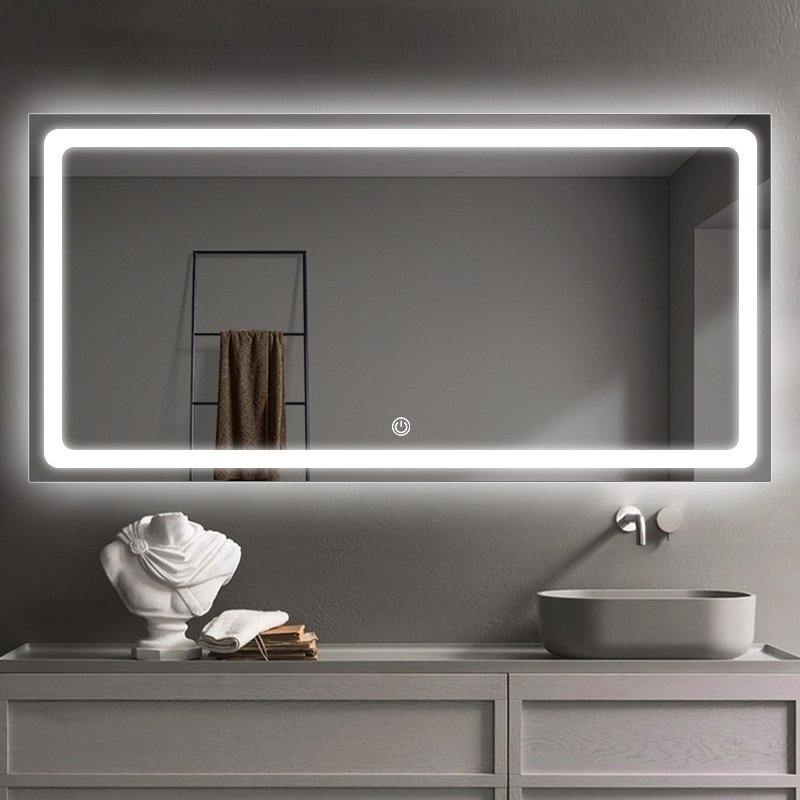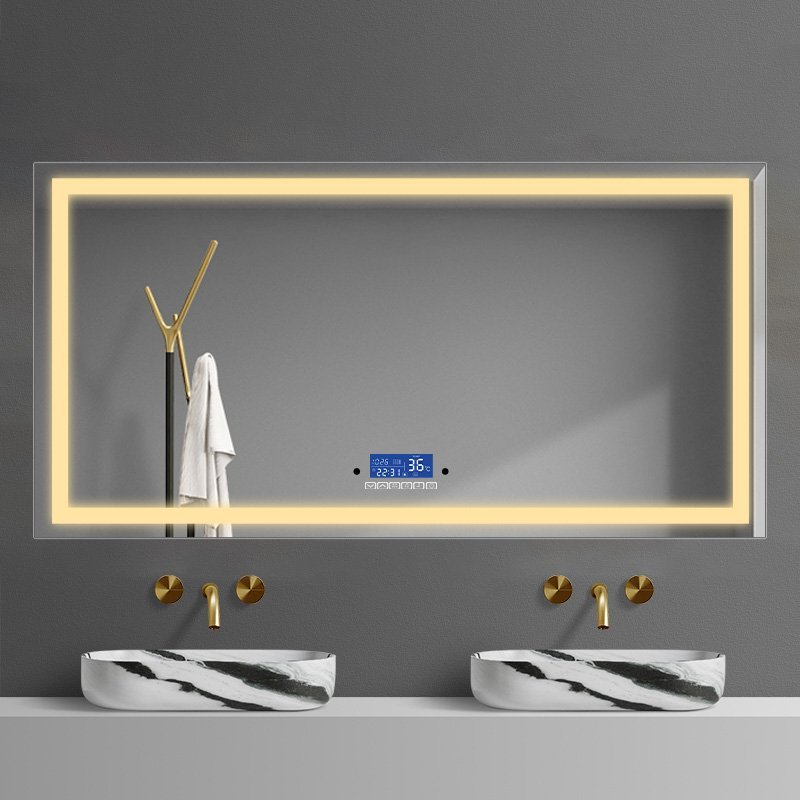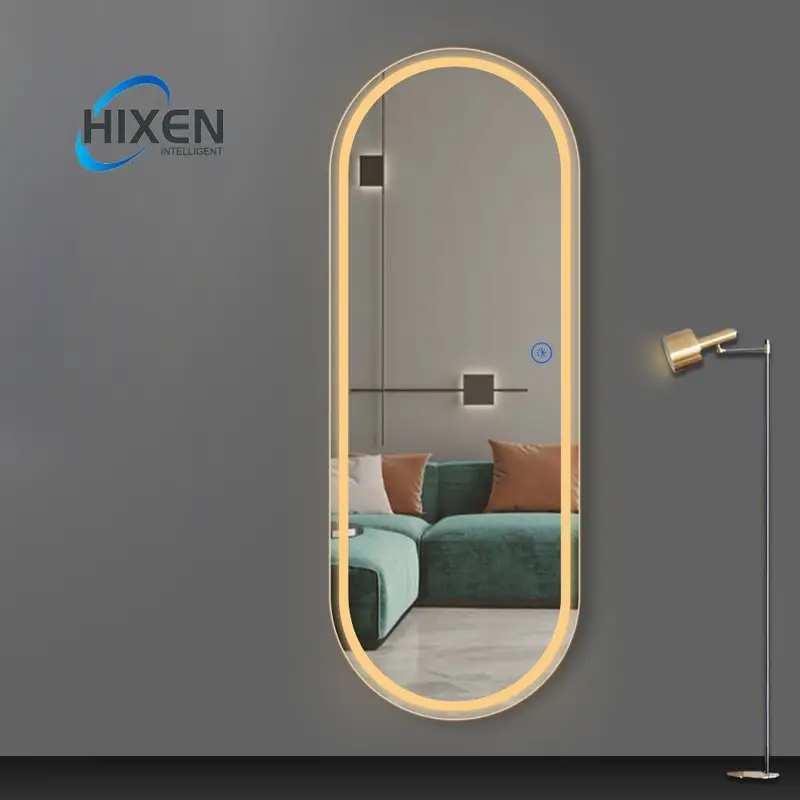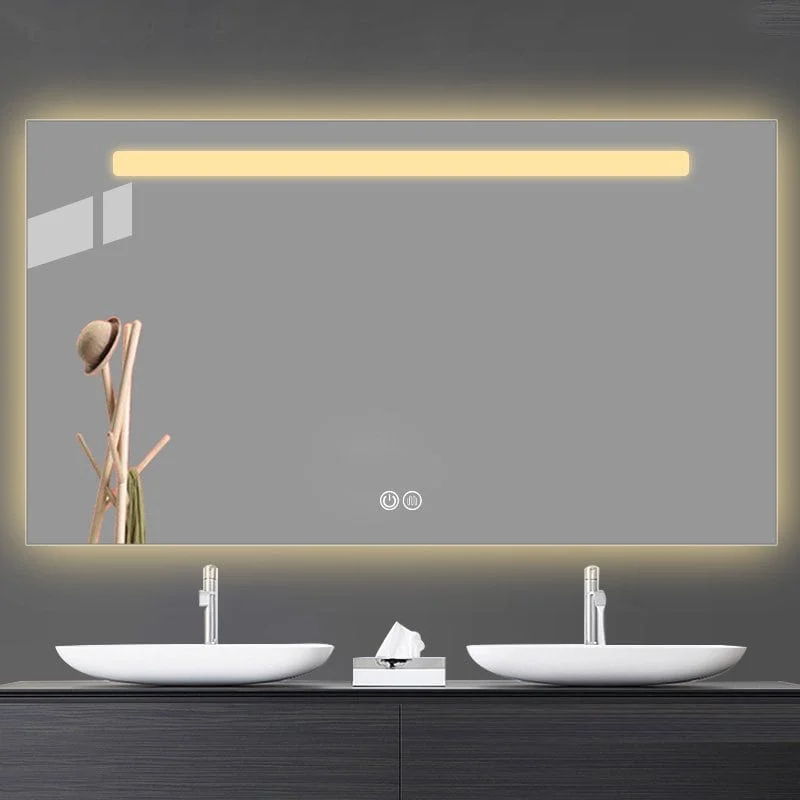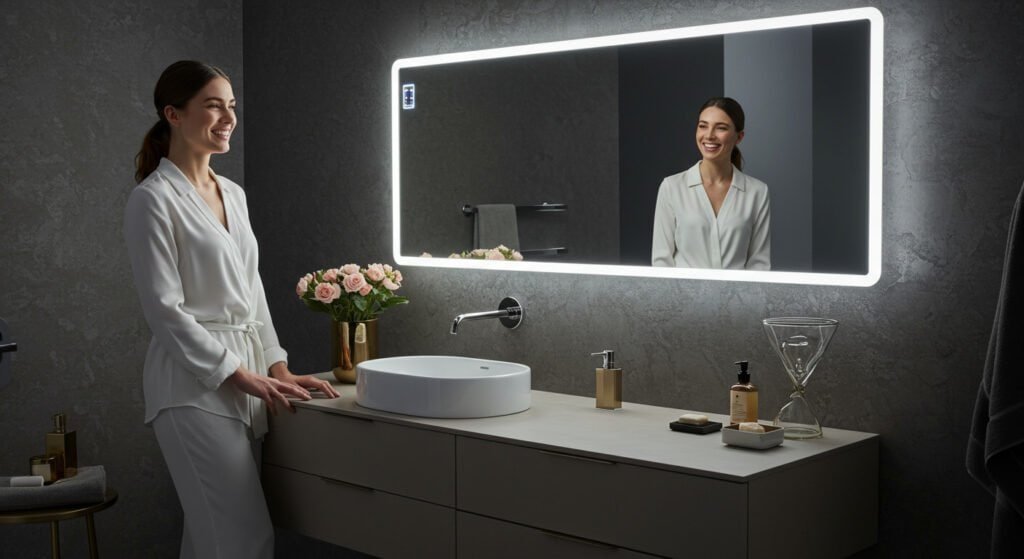|
Erhalten Sie Ihre Trinity Audio Spieler bereit...
|
So wählen Sie eine Wandspiegelgröße? Wenn Sie die falsche Spiegelgröße auswählen, kann sich Ihr Zimmer unausgeglichen und visuell chaotisch anfühlen, disrupting the entire aesthetic flow of your carefully designed space. The perfect mirror transforms any room into a sophisticated, well-proportioned environment.
The golden rule for mirror sizing requires selecting mirrors that measure 60-75% of the wall space or furniture width they accompany. This standard mirror size for bedroom, bathroom, or living spaces ensures optimal visual balance while maximizing both functionality and aesthetic appeal.
Understanding these professional sizing principles will help you make the perfect mirror selection for any space.
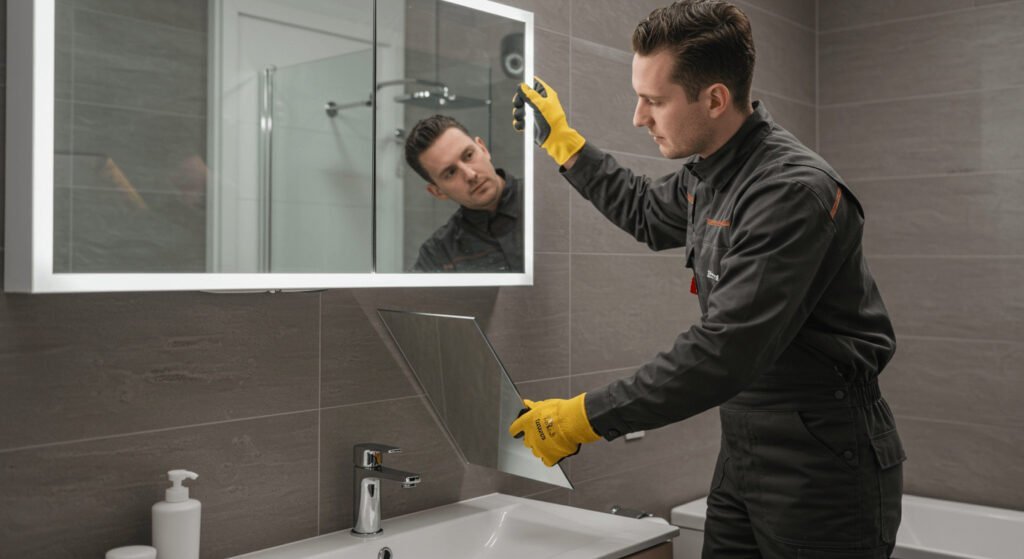
What’s the Standard Mirror Size Rule?
Interior designers adhere to established proportions to size mirrors for residential and commercial spaces.
The fundamental mirror size calculator principle dictates that mirrors should occupy two-thirds to three-quarters of their mounting surface width. This creates visual harmony while maintaining proper scale relationships throughout the room.
These size definitions apply for all types of mirrors, whether it’s a glass mirror, LED -Spiegel, or a bathroom mirror with lights. It doesn’t matter whether the lighted bathroom mirrors are a technological wonder, this is how all mirrors will be sized. These same guidelines apply to lighted mirrors for bathrooms or lighted vanity mirrors for a bathroom.
If you are selecting black frame mirrors or rectangular bathroom mirrors, you do need to count the width of the frame in your total measurements because that is the proper way of thinking about it and ensuring that your backlit mirror or light up vanity mirror has the proper visual weight in the space.
How do I Select a Mirror?
Choosing the right mirror for your situation is not just about measurements. There are other considerations you must think through to make sure you get the best results.
Consider room function, Lichtverhältnisse, mounting location, frame style, and special features like LED illumination when making your selection. A comprehensive vanity mirror size guide incorporates all these elements for informed decision-making.
It begins with measuring the space where you have the wall available and deciding what you’re going to use the mirror for. A bathroom vanity mirror is not the same as a bedroom mirror, so the dimensions are going to be different. Led bathroom mirror options are going to give you a lighting benefit, but the measurements are going to be the same. A lighted makeup mirror for your vanity is wider, probably between 18 Und 36 Zoll.
If you are going to put in a wall mirror with lights, don’t forget you’ve got to worry about the wiring and the switch. Today’s bathroom mirror scene is pretty cool. You’ve got a regular glass mirror, all the way up to a fancy vanity mirror with led lights that give you all the light you need in a really cool-looking package.
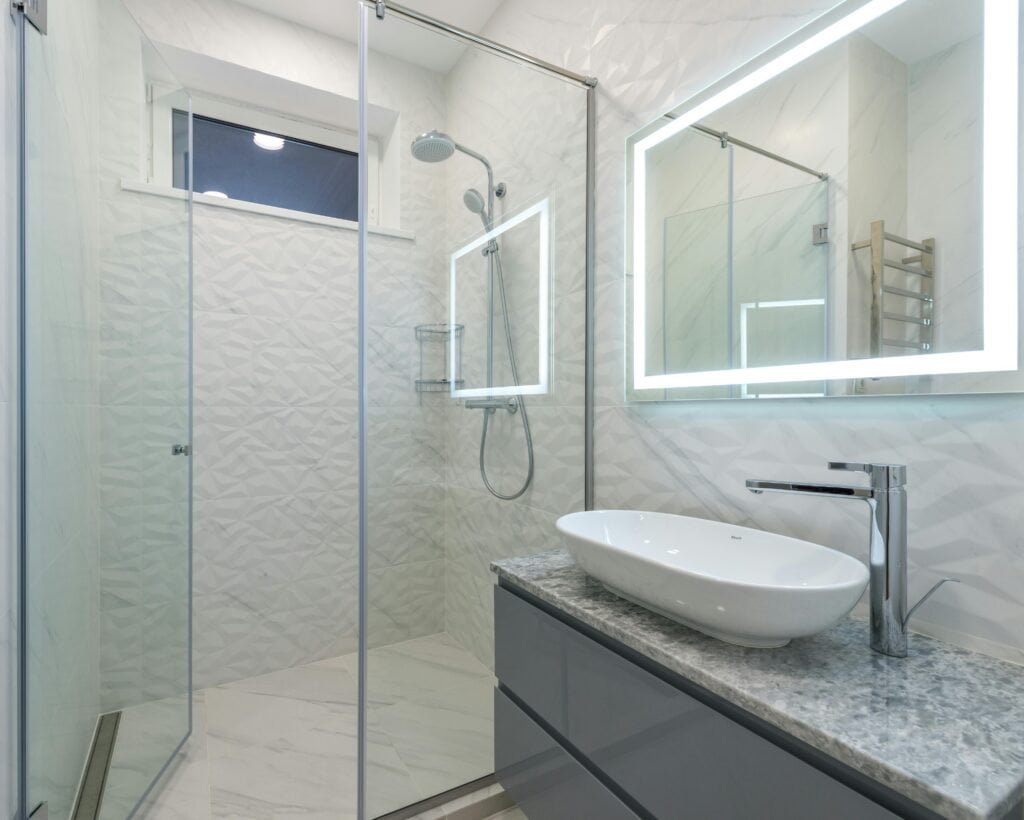
How Does Room Function Affect Mirror Size Choice?
The dimensions of the mirror that you’re going to want for the space in your room depend on what you’re going to use it for and for what it’s going to be positioned.
Bedrooms benefit from larger mirrors measuring 30-48 Zoll breit, while bathrooms require mirrors proportioned to vanity width. Entryways typically accommodate mirrors ranging from 24-36 inches for optimal functionality.
If you want to put a statement mirror in your living room, then you can use an oversized mirror (bis zu 60 Zoll breit) as a dramatic focal point. Maybe it’s across from a window or a set of windows where you want to reflect light or a beautiful view that you have. When it comes to the dining room, you can get a medium-sized mirror, perhaps 36-48 Zoll breit, that fits with the proportions of the furniture.
18 Zu 24 Zoll, and you want to be looking at yourself pretty close up, then you could put in a mirror like this. A lighted vanity mirror is awesome in a bedroom, especially in a dressing area. You also have led vanity mirror options for makeup so that you always have a consistent light for getting ready in the morning or at night.
How to Choose a Wall Mirror Size for a Bathroom?
You need to think about the size of the mirror that you might want for a bathroom above the vanity. Also, how big is the vanity countertop? How tall is the person that’s going to be using it? Do they need to see themselves from certain angles when they’re getting ready in the morning or at night?
Bathroom mirrors should measure 2-4 inches narrower than the vanity width, Typischerweise reicht von 24-48 Zoll breit. The bathroom mirror size calculator recommends positioning mirrors 5-10 inches above the vanity surface for optimal usability.
Bathroom environments present unique sizing challenges due to moisture, limited space, and multiple user requirements. Single vanity installations typically accommodate mirrors measuring 24-36 Zoll breit, while double vanity configurations require mirrors measuring 60-72 inches or two separate mirrors measuring 24-30 inches each. Led bathroom mirror selections provide superior illumination for grooming tasks while maintaining appropriate proportions.
The other thing is with 10 Zoll, 5.5 feet swipe and you have a big open space and there’s going to be a tiny little bitty 3-foot mirror. You have to think a little bit about that. With bathroom mirrors, there are all these cool features that are out there today. People are doing defogging mirrors where the structure of the mirror is set up in such that the outer rim heats up just enough to cause the water to get warm and evaporate. These mirrors have color temperature adjustability along with all kinds of cool features.
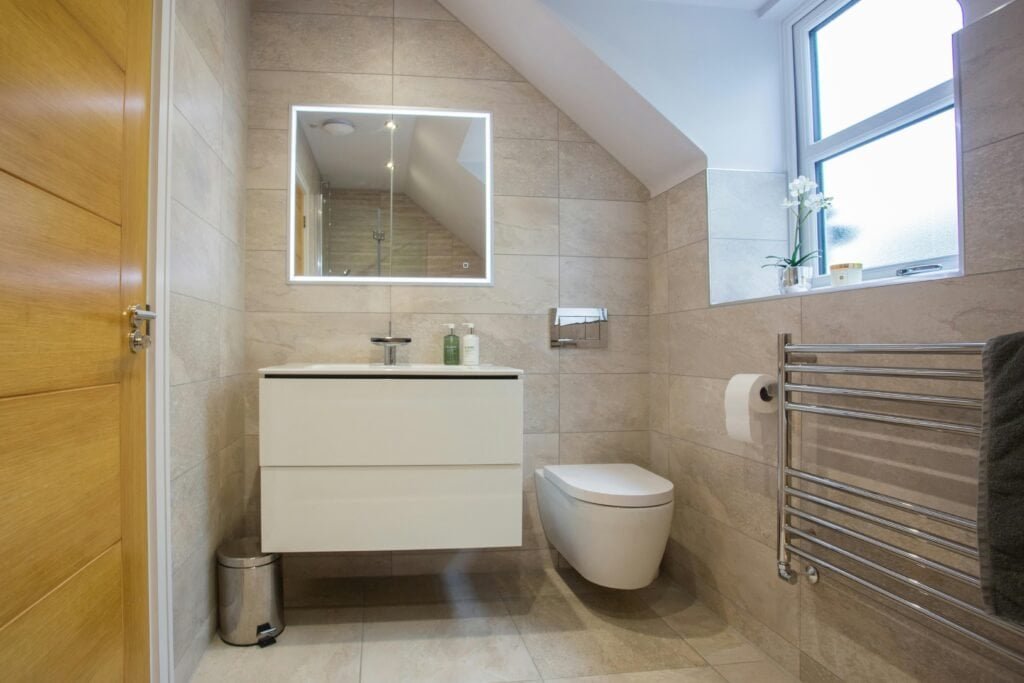
How to Choose Mirror Size for Vanity?
If you’re putting in a vanity mirror, then you’re going to want to make sure you measure it just right so it’s the right size for what you’re going to do.
Vanity mirrors should measure 65-75% der Eitelkeitsbreite, Typischerweise reicht von 20-40 inches wide depending on vanity size. This proportion creates visual balance while providing adequate reflection area for practical use.
Vanity applications demand specific sizing considerations to accommodate various grooming activities and user preferences. Standard vanity widths range from 24 inches for compact installations to 72 inches for luxury double-sink configurations. Lighted vanity mirrors enhance functionality by providing shadowless illumination for detailed tasks like makeup application and shaving.
A vanity mirror with led lights is going to be all that you need. It’s beautiful business because you’re not going to have to put in extra lighting around that. I have seen some people that have 6-foot counters and they’ve taken up 5 feet of the counters with giant mirrors. Dann, they have a little bitty square for the sink over here. All the mirrors are lined up, and when you step in front of the mirror, all the mirrors turn on. You can check yourself out from every angle.
| Eitelkeitsbreite | Empfohlene Spiegelbreite | Spiegelhöhe |
|---|---|---|
| 24 Zoll | 18-20 Zoll | 24-30 Zoll |
| 30 Zoll | 22-26 Zoll | 28-32 Zoll |
| 36 Zoll | 26-30 Zoll | 30-36 Zoll |
| 48 Zoll | 34-40 Zoll | 32-38 Zoll |
| 60 Zoll | 42-48 Zoll | 34-40 Zoll |
| 72 Zoll | 50-56 Zoll | 36-42 Zoll |
How to Choose Mirror Size for Entryway?
When it comes to an entryway, it’s not a very large space. You have a 7-foot ceiling. The mirror is going to be about 10-15 feet long or whatever. You’re probably going to have some problems with that.
Entryway mirrors should measure 24-36 Zoll breit und 36-48 inches tall to accommodate final appearance checks while maintaining appropriate scale for typical hallway dimensions.
When it comes to the mirror for the entryway, you want it to fill the space but not overwhelm the space. You’ve got to look at the ceiling height and the wall width. You also need to think about the flow of traffic if somebody is coming in and out. I’ve seen it where people use the rectangular bathroom mirrors up here in the entryway. It works out very well, depending upon the dimensions.
Room mirror ideas for entrances often incorporate mirrors with decorative frames that complement existing architectural elements. Full-length mirrors work well in larger entryways but require careful positioning to avoid creating cramped feelings. Backlit mirror options provide welcoming illumination in darker entryway areas while maintaining sophisticated aesthetics. Consider the viewing distance when selecting mirror height, ensuring comfortable use for household members of varying heights.
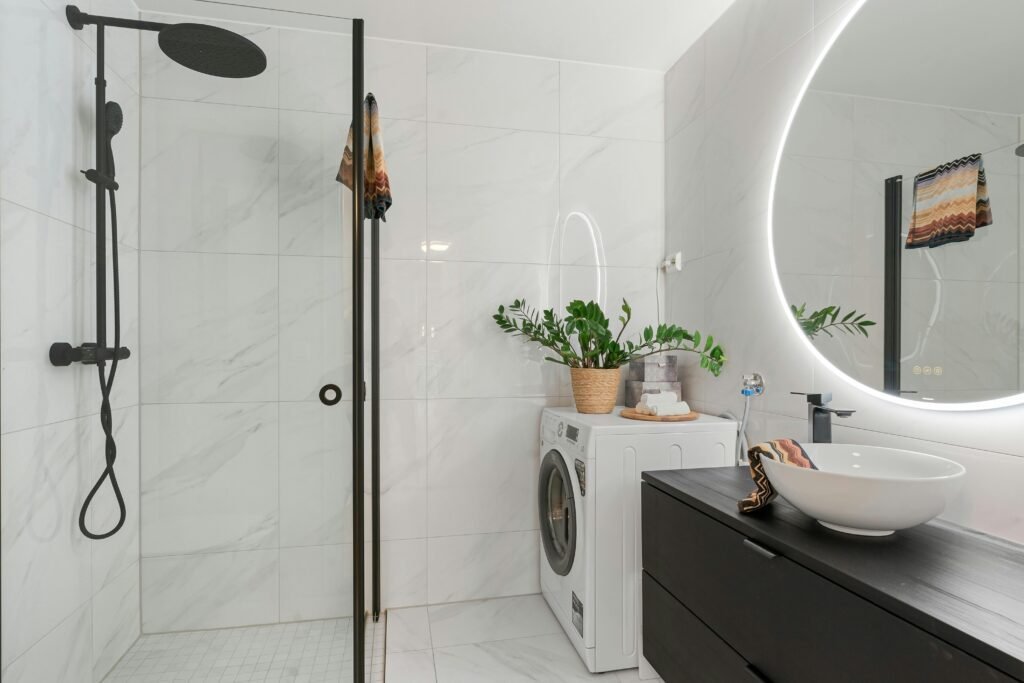
How to Choose Full-Length Mirror Size?
A full-length mirror is a mirror that’s going to be the length of a person, and in fact, there are recommended full-length mirror sizes. They say that you want to be able to see from your head to your toes.
Full-length mirrors should measure minimum 48 Zoll groß und 16-20 inches wide to provide complete body reflection. Full length mirror size in cm typically ranges from 120-180 cm tall and 40-50 cm wide for optimal functionality.
Full-length mirror applications serve specific functional requirements that dictate minimum dimensional standards. The mirror must provide complete reflection from head to feet when positioned at appropriate viewing distances. Standard full-length mirrors measure 48-72 Zoll groß, mit 60 inches representing the most popular residential choice.
Width requirements depend on intended use, with dress mirrors requiring 16-18 inches and exercise mirrors needing 20-24 inches for movement accommodation. Led mirror technology enhances full-length mirror functionality by providing even illumination that eliminates shadows and distortion. Professional dancers and athletes often prefer larger full-length mirrors measuring 72-84 Zoll groß und 24-36 inches wide for comprehensive movement analysis.
Should a Full-Length Mirror be Taller Than You?
Full-length mirror height requirements depend on mounting position and user height to ensure complete reflection coverage without unnecessary oversizing.
Full-length mirrors should extend 12 inches above user height when floor-mounted, or match user height when wall-mounted at eye level. This ensures complete reflection while maintaining proportionate room aesthetics.
The relationship between mirror height and user height affects both functionality and visual proportion. Floor-standing mirrors require additional height to compensate for the viewing angle created by distance from the mirror surface. Wall-mounted installations can utilize shorter mirrors because the mounting position optimizes the viewing angle.
Multiple-user households require mirrors sized for the tallest regular user to ensure universal functionality. Glass mirror quality becomes particularly important in full-length applications where distortion would be readily apparent. Consider the room’s ceiling height when selecting full-length mirrors to maintain appropriate proportional relationships with surrounding architectural elements.

What is the Best Width for a Mirror?
Optimal mirror width varies significantly based on application, mounting location, and intended function within the specific room environment.
Mirror width should range from 60-75% of the supporting surface width, typically measuring 18-48 inches for most residential applications. This proportion ensures visual balance while maximizing functional reflection area.
Width selection requires careful consideration of both functional and aesthetic requirements. Bathroom applications benefit from mirrors measuring 24-36 inches wide for single vanities and 48-60 inches for double vanity installations. Bedroom mirrors can accommodate wider dimensions, reicht von 30-48 inches depending on wall space and furniture arrangement.
Vanity lights placement often influences mirror width selection to ensure proper illumination distribution. Led vanity mirror options provide integrated lighting that eliminates shadows regardless of mirror width. The mirror size chart should account for frame width when calculating total installation dimensions. Modern lighted mirrors for bathrooms often feature wider profiles to accommodate LED lighting systems while maintaining sleek aesthetics.
Can a Mirror be Too Big for a Room?
Oversized mirrors can overwhelm small spaces, create visual imbalance, and make rooms feel cramped despite their space-enhancing properties.
Mirrors become too large when they exceed 80% of wall width or create uncomfortable proximity to surrounding furniture and architectural elements. Proper sizing maintains harmony between mirror presence and room proportions.
Large mirror installations require careful evaluation of room dimensions and existing design elements. Oversized mirrors in small bathrooms can create claustrophobic feelings and reflect unflattering angles. Living room installations benefit from larger mirrors, but excessive size can dominate other decorative elements and artwork. Lighted vanity mirrors require additional consideration for their visual weight due to integrated lighting elements.
The key lies in maintaining balance between mirror functionality and overall room aesthetics. Professional designers recommend testing mirror placement using cardboard templates before final installation to evaluate proportional relationships. Bathroom vanity mirrors should never extend beyond vanity edges, as this creates awkward visual relationships and potential functional problems.

What Size Mirror is Too Big?
Specific dimensional limits depend on room size, but mirrors exceeding certain proportional thresholds create functional and aesthetic problems.
Mirrors larger than 48 inches wide in standard bathrooms or exceeding 75% of wall width in any room typically create oversizing issues. These dimensions overwhelm most residential spaces and furniture arrangements.
| Room Type | Maximum Recommended Width | Warning Signs |
|---|---|---|
| Small Bathroom (5×8 ft) | 30 Zoll | Extends beyond vanity edges |
| Standard Bathroom (8×10 ft) | 42 Zoll | Overwhelms wall space |
| Master Bathroom (10×12 ft) | 60 Zoll | Creates cramped feeling |
| Schlafzimmer (10×12 ft) | 48 Zoll | Dominates furniture |
| Living Room (12×15 ft) | 54 Zoll | Overpowers seating area |
| Entryway (4×8 ft) | 36 Zoll | Blocks traffic flow |
Professional installations avoid mirrors that create these dimensional problems by following established proportional guidelines. Modern bathroom mirror selections should consider both current trends and timeless proportional principles. Backlit mirror installations require additional dimensional consideration due to their enhanced visual presence through illumination. Light up vanity mirror options often appear larger than their actual dimensions due to lighting effects. Room mirror ideas should always prioritize appropriate sizing over dramatic impact to ensure long-term satisfaction with the installation.
How to Know if a Mirror is Too Big?
Identifying oversized mirrors requires evaluating visual balance, functional efficiency, and proportional relationships within the room context.
Mirrors are too large when they overpower surrounding elements, create uncomfortable viewing angles, or extend beyond logical mounting boundaries. Visual weight should complement rather than dominate the space.
Several indicators reveal when mirror dimensions exceed appropriate limits. Mirrors that reflect excessive wall area or create distorted perspectives suggest oversizing issues. Functional problems arise when mirrors extend too close to light switches, electrical outlets, or plumbing fixtures. Aesthetic imbalance occurs when mirrors overwhelm furniture pieces or architectural features.
Small bathroom mirror installations particularly suffer from oversizing due to limited wall space and proximity issues. Rectangular bathroom mirrors should maintain clear margins from vanity edges and ceiling lines. Led bathroom mirror installations require additional clearance for electrical connections and heat dissipation. The mirror size calculator should account for all these factors to prevent installation problems and aesthetic disappointment.

Abschluss
Ultimately, choosing the right size wall mirror is a balance of proportional guidelines, Funktionsbedürfnisse, and room-specific considerations. Following the 60-75% width rule with user needs in mind will ensure the best results regardless of the room or mirror type.
- Um zu erfahren, wie Sie den richtigen Badezimmerspiegel auswählen, klicken Sie hier.
- Um zu erfahren, wie Sie einen Spiegel installieren.
- Um zu erfahren, wie Sie den Spiegel der richtigen Größe auswählen, klicken Sie hier.
- Um zu erfahren, wie Spiegel gemacht werden, klicken Sie hier.
- Klicken Sie hier und Sie werden lernen, warum wir in Spiegeln besser aussehen.
- Klicken Sie hier 10 LED -Spiegelhersteller für 2024.
- Klicken Sie hier, um herauszufinden, warum mein Eitelkeitsspiegellicht nicht ankommt?
- Finden Sie heraus, wie groß das Badezimmerspiegel sein sollte? Klicken Sie hier
- Klicken Sie hier, wenn Sie nicht wissen, wie Sie Ihren Spiegel reinigen sollen
- Um herauszufinden, wie Sie Berührungssensorspiegel nicht funktionieren
- Finde es heraus 10 Häufige Probleme mit LED -Badezimmerspiegeln hier klicken






